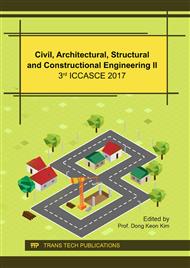p.166
p.173
p.179
p.183
p.197
p.202
p.213
p.219
p.224
Application on the Contingent Valuation Method for Accounting of Social Benefits of Environmental Education Based on the Cultural Landscape at the Miaoli County, Taiwan
Abstract:
With the increase of environmental identity, the need of environmental education was growth suddenly, so that the government tried to improve the related strategies for different fields. Therefore, the environmental education was a main trend for Taiwan environmental issues, and it also influenced the tourism markets and local development chances. In addition, the cultural landscape was one of the main issues with the need of cultural heritage conservation as well. From the pre-study results and literature review, the cultural landscape resource and environmental education owned much closed relationship, and he environmental education seems one of the solutions of cultural landscape conservation. In Taiwan, tourist activities were conflict with cultural landscape resources although the win-win situation was expected. The study tried to understand the identity of environmental education, and it also analyzed cultural landscape preference by using questionnaire at Miaoli County, Taiwan. In addition, it account the social benefits of environmental education based on the cultural landscape resources through contingent valuation method to recognize their practical value there. The result showed the respondents are able to pay more for the cultural landscape with environmental education, and the payment may be located on even one twentieth annual incomes. In other words, people are willing to spend more money to enjoy more diversity for cultural landscape with environmental education, but the practical strategies were needed.
Info:
Periodical:
Pages:
197-201
Citation:
Online since:
February 2018
Authors:
Price:
Сopyright:
© 2018 Trans Tech Publications Ltd. All Rights Reserved
Share:
Citation:


